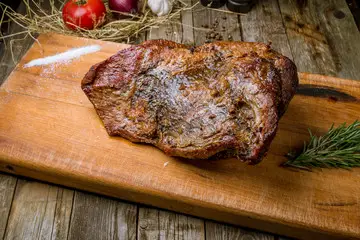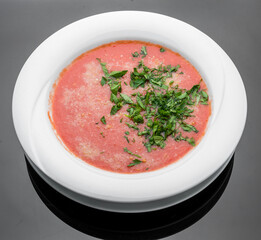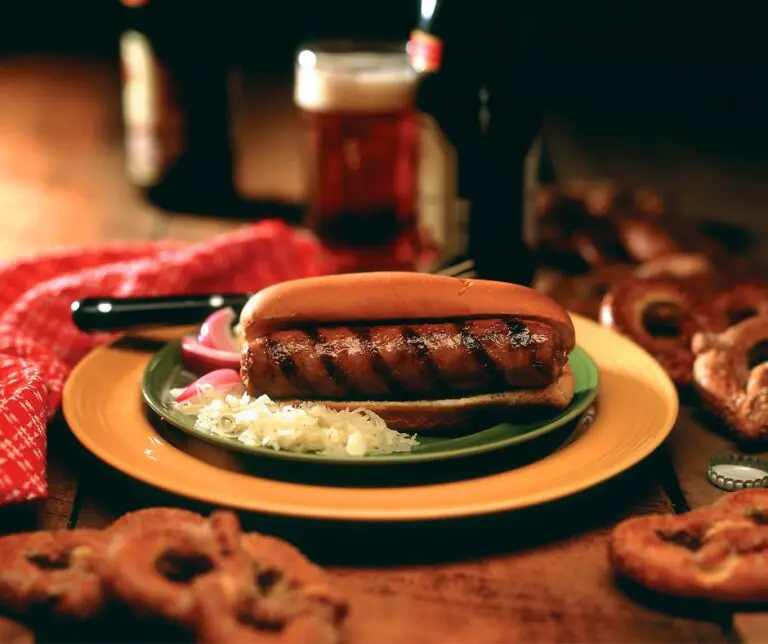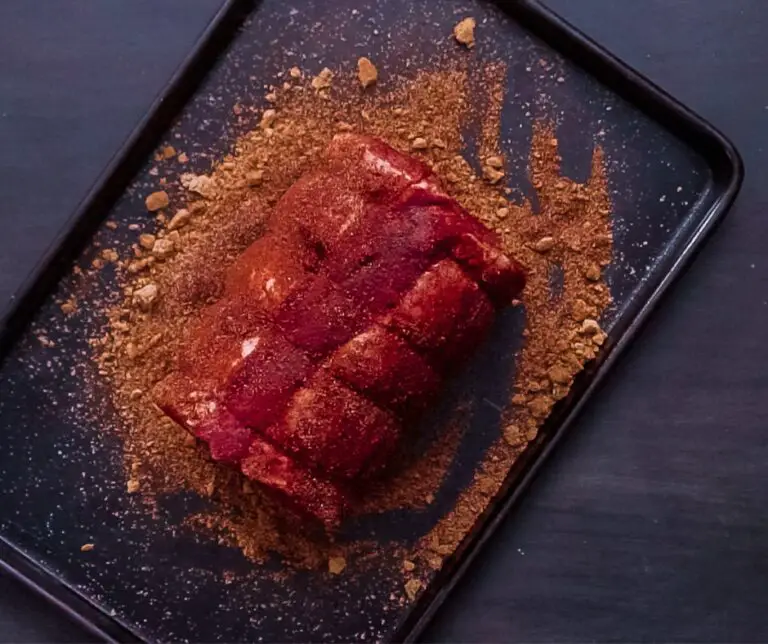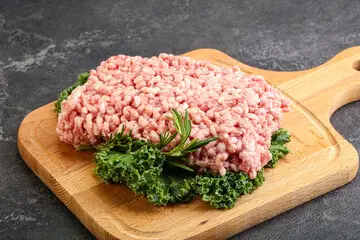
Cooking meat is an essential part of meal preparation for many households. Fast and easy meals are often the go-to for busy schedules, and ground meat is a popular ingredient for these types of meals.
But have you ever wondered if grinding meat after it is cooked could be a healthier or more flavorful option? In this post, we will explore the pros and cons of grinding meat after it is cooked and discuss how this technique can affect the taste, texture, and nutritional value of the meat.
We will also provide some tips and techniques to help ensure that your ground meat is cooked perfectly every time. Whether you are looking to make a healthier meal, add flavor to a dish, or simply save time in the kitchen, grinding meat after it is cooked could be a great option to consider.
Can You Grind Meat After It Is Cooked?
Table of Contents
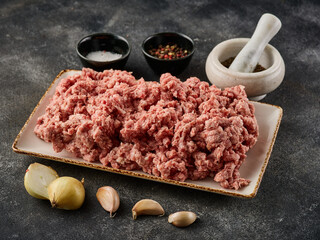
Cooked meats can be ground for an even more tender texture and flavor. Grinding cooked meat can be an effective way to give it a new texture and taste. Cooked meats are softer and easier to grind, making them ideal for creating finely ground burgers, chili, tacos, and other dishes.
Grinding cooked meat also helps to break down tougher cuts, allowing them to be used in recipes that demand more tenderness. It’s important to note that while grinding cooked meat can open the door to a variety of flavorful recipes, the meat must be properly cooked and cooled to prevent foodborne illness. For added safety, the equipment used to grind the meat should also be clean and sanitized.
But, Why Should You Grind Cooked Meat?
Grinding cooked meat can be a great way to improve the texture and flavor of ground beef. After cooking, the proteins in the meat are broken down, resulting in a more tender texture. This can make it easier to shape and form your ground beef into burgers or meatballs.
Furthermore, grinding cooked meat can reduce the chances of E. coli contamination, as the heat from cooking will have killed any bacteria present.
Overall, grinding cooked meat is a great way to ensure better quality, more palatable ground beef that tastes fresher than what is often found at the store. Additionally, it can be a great way to reduce food waste, as leftovers can be turned into ground beef and used in a variety of dishes.
Types of Meat You Can Ground After Cooking?
Cooked beef and chicken are the most common types of meat that can be ground after cooking. Ground beef is a versatile ingredient that can be used to make a wide range of dishes, including hamburgers, tacos, and meatloaf.
Cooked chicken can also be ground, and can be used to make chicken burgers, chicken patties, and many other dishes. Other types of meat that can be ground after cooking include lamb, turkey, and veal.
Ground meat is a great way to add flavor and texture to a variety of dishes. It can be used to create meals with a higher protein content, or as a flavorful and juicy alternative to beef and chicken.
What Are the Ups and Downs of Grinding Cooked Meat?
Grinding cooked meat can be a great way to create new and interesting recipes. The process can be beneficial as grinding cooked meat can increase the surface area, making it easier to absorb flavors and seasonings.
However, grinding cooked meat can be used to create a variety of textures and shapes. However, it is important to know the potential drawbacks of grinding cooked meat. For example, the extra heat generated during the grinding and mixing process can reduce the tenderness of the meat.
Additionally, the risk of cross-contamination increases when grinding cooked meat, as bacteria from the grinder can be transferred to the meat. It is important to take these potential downsides into consideration when deciding whether to grind cooked meat for recipes.
The Ups Side
Grinding cooked meat allows for a great deal of creativity when it comes to food preparation. It offers the opportunity to explore a variety of recipes, as store-bought meat does not provide the intended texture for certain dishes.
Also, grinding your own meat can save you a considerable amount of money, as you can use the same meat in different forms, eliminating the need to visit the butcher frequently. Grinding cooked meat also allows for complete control over the texture and thickness of the meat, and it can be done in a variety of ways. From a manual meat grinder to an electric one, there are countless options to make grinding meat easy and efficient.
The Down Side
Cooked ground meat is generally considered to have a slightly lower taste profile compared to its raw counterpart. This is due to the additional stress that the grinder experiences when trying to process cooked meat. This can cause a decrease in the longevity of the machine, as it takes significantly more time to process cooked meat.
As such, it is important for those who are utilizing a grinder for their cooking purposes to consider the implications of cooking their meat before grinding. Taking the necessary precautions can help to extend the life of the machine while ensuring that the best taste possible is achieved.
How to Prepare Cooked Meat for Grinding?
When grinding cooked meat, preparing it correctly can prevent the final product from becoming too soft. Before grinding, the meat should be cut into small cubes and run through a coarse plate meat grinder.
This will break the meat down into smaller pieces while providing enough texture to prevent it from becoming overly soft. Also, this allows the other ingredients to be more visible, creating a more visually appealing product. However, when grinding cooked meat, it is important to ensure the temperature of the meat is below 40 degrees Fahrenheit to reduce the risk of bacterial contamination.
Steps To Grind Your Cooked Meat
Step 1:
Preparing your grinder is the first step when making your own ground meat. An electric meat grinder is best suited for this task as it can help reduce the amount of guesswork and manual labor.
Before use, make sure your grinder is free of any dirt or leftovers from prior use. This can be done by running a few pieces of bread through the machine to ensure it is completely clean. Additionally, lubricate any necessary parts in order to ensure the grinder is running efficiently. Taking the time to properly prepare your grinder will help ensure you get the desired results from your ground meat.
Step 2:
Using a sharp knife, chop up the cooked meat into small pieces of the desired size. Do not make the pieces too small, as this may compromise the texture of the meat and lead to mushy results. It is important to note that the size of the pieces will impact the overall dish, so it is important to take care when cutting the meat.
Cutting the pieces too small will not only affect the presentation of the dish, but also the taste and texture. When done properly, the result should be a succulent dish with pieces of meat that are just the right size.
Step 3:
Now, it is time to prepare the meat for grinding. Pour a sufficient amount of meat into the grinder at once, and using the coarse grinding plate, begin grinding. Keeping the grinder from being overloaded is essential to ensure a smooth grinding process.
Once the grinding is complete, more meat can be added to the grinder and the process can be repeated until the desired outcome is achieved. To avoid contamination, it is recommended to keep a chilled bowl underneath the grinder to collect the ground meat. Following these steps will ensure you have the perfect ground meat for your recipe.
Step 4:
Once the grinding process is complete, it is essential to thoroughly clean the grinder. Leaving any particles of food or residue in the plates or any other part of the grinder should be avoided as it can lead to the growth of bacteria.
To ensure the grinder remains clean and safe, disassemble the components, wash them in warm soapy water, rinse, and then dry them. It is important to use a clean cloth and to make sure no excess water is left in the grinder as moisture can cause rust or mold. Cleaning the grinder regularly and thoroughly is essential for food safety and hygiene.
FAQs
Can you grind warm meat?
It is not recommended to grind warm meat. Grinding meat is best done when the meat is cool and at room temperature. Grinding warm meat can cause the meat to become mushy, ruining the texture of the ground meat. In addition, warm meat can cause the equipment used to grind the meat to become damaged, risking potential safety hazards. Therefore, it is important to ensure that any meat intended to be ground is cool and at room temperature. Keeping the meat at the correct temperature will help ensure the texture and safety of the ground meat.
Can you Grind Cooked Meat in a Food Processor?
Yes, you can grind any type of cooked meat in a food processor. Some cooks prefer a food processor for grinding cooked chicken and turkey due to their ability to grind quickly and evenly. This method creates a smooth texture with minimal effort. It also ensures that any unwanted fat is removed during the grinding process. Furthermore, you can use the same food processor to create ground beef and fish. A food processor is an ideal tool for creating a variety of ground meats as it can accommodate different sizes of pieces and provide a consistent grind. With a few simple steps, you can easily create a variety of cooked ground meats that are perfect for your favorite recipes.
Can You Grind Cooked Meat in a Blender?
Yes, you can grind cooked meat in a blender. This is an easy way to make use of leftover cooked meat. Simply add the cooked meat to the blender along with a small amount of liquid, such as broth or water. Pulse the blender until the desired consistency is achieved. Be sure to start with short pulses and work up from there to get the desired texture. Grinding cooked meat in a blender is a great way to make it easy to incorporate small pieces into sauces, casseroles, soups, and many other types of recipes. It can also help you to create a more consistent texture in dishes that require ground meat.

Hi, I’m Iolanda I am a mother of two and know how to whip up satisfying dishes for friends and family in a seemingly effortless way. The blog goal is reader-oriented, So We are always looking for the newest information about the best products on the market to offer product reviews and tutorials to assist users.Have Fun on The Website

